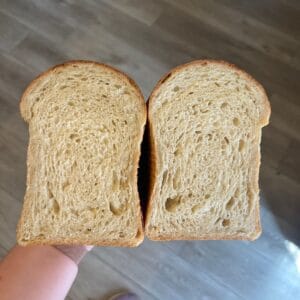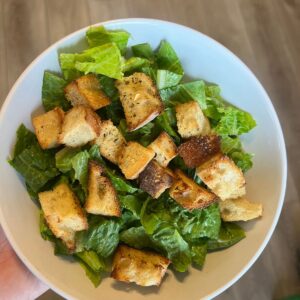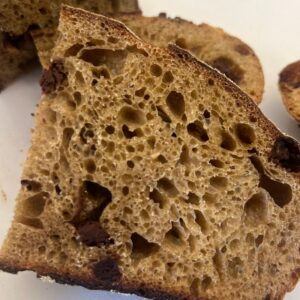Zero Discard Sourdough Starter: Never discard again!
We may earn money from the products/companies mentioned in this post. As an Amazon Associate I earn from qualifying purchases.
Zero Discard Sourdough Starter: an Easy No Discard Method
If you've ever felt overwhelmed by the discard method of maintaining a sourdough starter, you’re not alone.
Between the constant feeding, the "wasted" flour, and the ever-growing mountain of discard, many home bakers are left wondering if sourdough is worth it.
Spoiler alert: It is. And it's a lot easier than you think! (This soft sourdough sandwich bread will convince you, too!)
With my zero discard sourdough starter method, it can be simple, stress-free, and sustainable.
This blog post is your go-to guide for ditching the daily discard routine while still enjoying delicious homemade sourdough bread.
Whether you're new to sourdough or already have a starter in the fridge, you’ll walk away with practical steps to simplify your baking and keep your starter healthy—without wasting a lot of flour.
Please watch the video to see exactly how I take care of my starter! 👇🏼
Why the Internet Overcomplicates Sourdough (and What to Do Instead)
You’ve seen the sourdough gurus with their spreadsheets, exact hydration, and daily rituals. While that works for some, it creates starter paralysis for the rest of us.
Truth? The pioneers carried starter on the Oregon Trail. Gold rush miners made flapjacks with aged starter that they carried in their packs. If they could do it, so can you. Promise!
You don’t need to keep feeding every day. You don’t need to feel guilty if you’re not perfect.
If you’re overwhelmed, switch to this zero discard method. Start with an established starter from a friend or find some at a farmer's market.
Or, make a starter yourself, then keep it alive with this stress-free rhythm.
Meet my starter - Alfred Humphrey
Yes, my sourdough starter has a name—Alfred Humphrey—and he’s been with me for over four years! I didn’t start him myself; I purchased an already established starter. (If you’re curious about how to start your own from scratch, see below! I started my own this year, and named her Betty Bubbles!)
Alfred lives happily in my refrigerator, and I only feed my starter when I want to bake something.
I bake about once a week, so I simply take him out, feed him, let him double, bake with what I need, and return him to the fridge. That’s it.
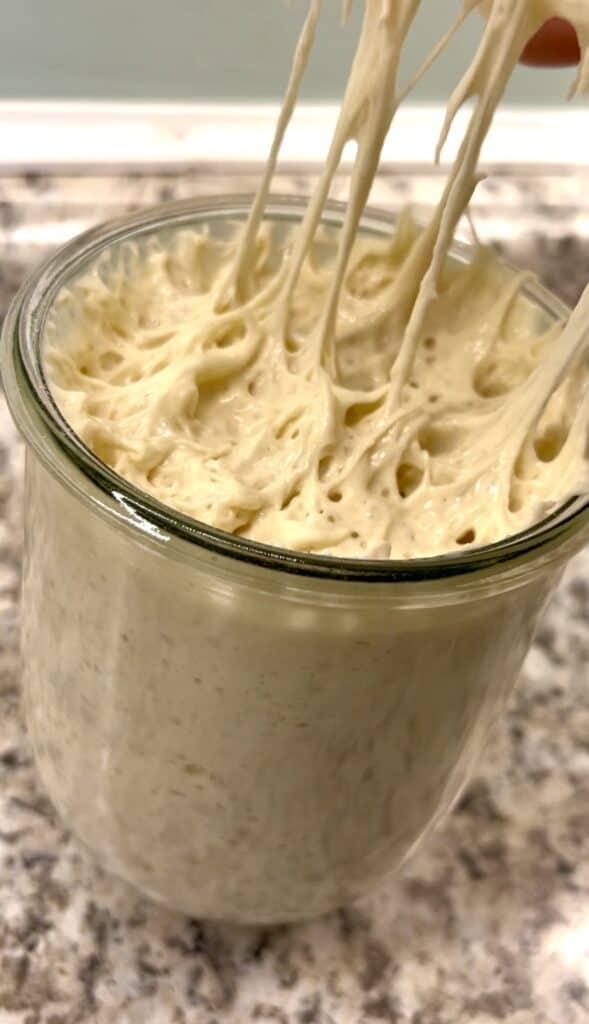
How to Catch Wild Yeast and Make a Sourdough Starter from Scratch with Flour and Water
I have an entire video walking you through every single step of how to make your own sourdough starter from scratch! It's super easy but does take a little bit of time (about 3 minutes a day for around two weeks).
Oh, and all you need are water and flour (and a jar)!
Watch how to make your own sourdough starter on YouTube!
What Is Sourdough Discard?
Sourdough discard is the portion of starter that you remove before feeding your sourdough starter.
Traditional methods recommend removing up to half of your starter daily or every other day to prevent using too much flour and water.
And yes, there are manyrecipes to use the discard, but if you’re not using it regularly, it piles up.
That’s how you end up with a jar (or three) of starter in the back of the fridge, haunting your dreams and making you feel guilty.
The only reason you're told to toss it is to keep your starter manageable and to avoid having too much starter.
(If you want to know how I make a "discard" recipe if I never discard, see below!)
Do You Really Need to Discard Sourdough Starter Every Day?
No, you don’t.
Unless you’re baking bread every day, or maintaining a very large starter jar at room temperature, there is absolutely no need to discard so frequently.
You can feed your starter less often by storing it in the fridge between bakes.
By only pulling it out when you need it, you eliminate the need to keep feeding and discarding constantly.
This is what’s known as a no-discard starter method—or better yet, the zero discard method.
The Zero Discard Method Explained (Step-by-Step)
Here's exactly how I maintain my zero discard sourdough starter:
- Store your starter in the fridge.
Once your starter is established, it can go right in the fridge, where it will stay until you’re ready to make bread. - Before baking, feed the starter.
When I want to make sourdough bread, here are the steps I follow. I pull my starter out of the fridge and feed a small amount of it the night before I want to mix up my bread. I usually feed 100 grams of starter with 200g of unbleached all-purpose flour and 200g of filtered water. (Here's my favorite jar to use for sourdough!) - Let the starter double in size.
Leave it out at room temperature overnight. It will grow, bubble, and reach its peak by morning. (I cover it loosely with a towel or a non-tight fitting lid on my Weck jar.) - Use what you need, return the rest.
Whatever amount of starter you need for your bread recipe, scoop it out and use it. The remaining starter goes back in the fridge in the original jar of starter. No discard needed.
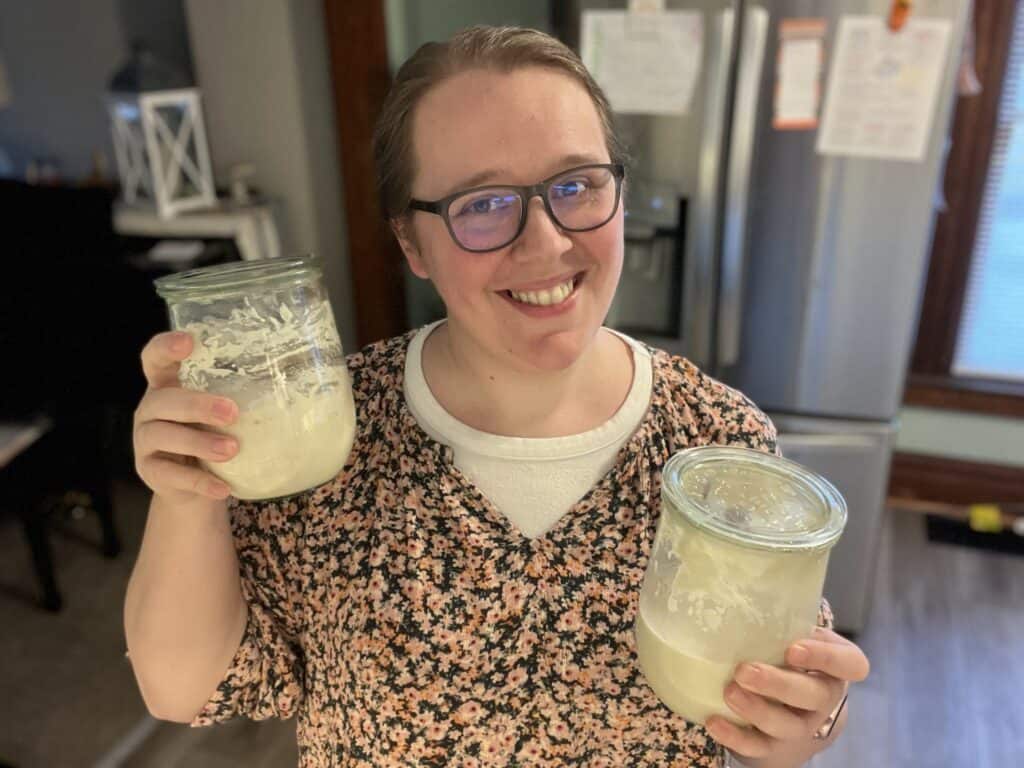
Can You Use Your Starter Straight from the Fridge?
Absolutely!
Your starter stored in the refrigerator can be used directly in certain recipes, especially those where wild yeast isn't the main leavening agent (think pancakes, muffins, or crackers).
If you're making a discard recipe that calls for sourdough discard, you can just use a scoop of your unfed starter straight from the jar.
For bread, however, it’s best to feed it at least once to ensure it’s an active starter that will double in size and give you that beautiful oven spring.
HOWEVER, you "can" also use your unfed starter to make bread, but the process will take much longer, and you'll need to bulk ferment for a much longer period of time.
What If Your Starter Gets Sluggish? Try a Hard Refresh
Every few months, you may notice your starter is hungry—it’s sluggish, watery, or your loaves aren’t rising like they used to. That’s when it’s time for a hard refresh.
Here’s what I do:
Take 25g of starter from the jar.
Feed with 125g of flour and 125g of filtered water (a 1:5:5 ratio).
Let it rise, then repeat once.
This gives your starter a boost and builds a stronger starter without feeding it daily or discarding large amounts.
You could also try feeding your starter with rye flour, as that is very helpful for sluggish starters, too!
Sourdough starter is a lot hardier than we think! I once left a jar of starter in the fridge for over a year, and when I finally took it out, I was able to make beautiful bread in 48 hours!
Can You Still Make Discard Recipes Without Actual Discard?
Yes! You don’t need to make discard just to enjoy sourdough recipes like muffins, crackers, or pancakes.
Instead, use a bit of your fed starter or even your unfed starter from the fridge. For non-leavened recipes (like crackers), it's just there to add that tangy sourdough flavor, not rise your dough.
This way, you can enjoy recipes that call for sourdough discard—without actually wasting anything!
How to Feed Your Starter Without Creating Discard
Feeding doesn’t have to mean throwing out half your starter.
Instead: Only take out the amount of starter you need to bake (100g gives me enough for 2-4 loaves of bread, depending on what recipe I'm using).
Feed it with double parts flour and water by weight.
Let it sit until it’s bubbly and active.
Use what you need and put the rest back into your fridge starter jar.
Summary: Key Takeaways for a No-Discard Sourdough Routine
You don’t have to discard every day. A zero discard sourdough starter is totally doable and sustainable.
Store your starter in the fridge and feed only when you plan to bake.
Use what you need, and save the rest—no more waste.
Hard refreshes can bring your starter back to life if it gets sluggish.
Fed or unfed starter can be used in discard recipes—no waste necessary.
Use unbleached flour, filtered water, and let the starter sit at room temp to peak.
Keep your starter healthy with occasional maintenance, not daily micromanaging.
Want more help with sourdough? Check out my YouTube channel—and don’t forget to check out my easy sourdough bread recipe for beginners!

